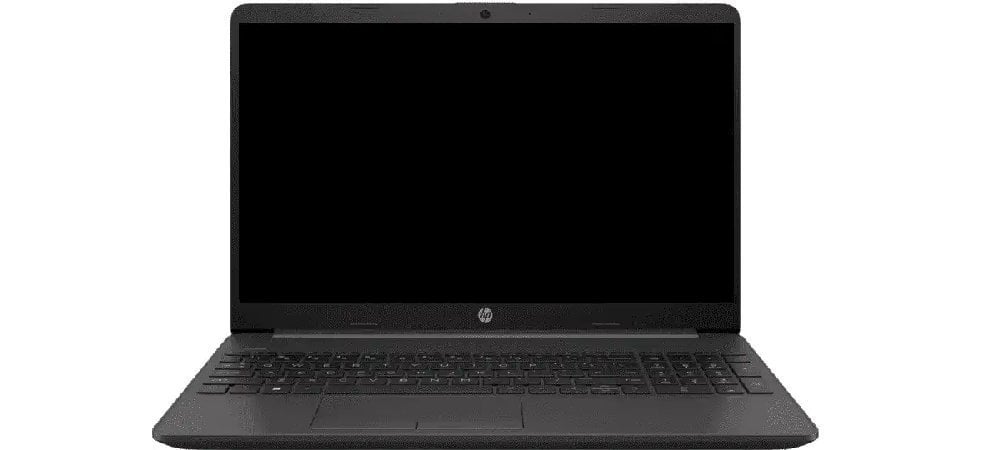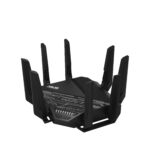If you’re getting a “black screen of death” that can abruptly halt your work or play on a Windows PC or laptop. This error shows up as a lack of visual feedback on the screen, so basically you see black (or nothing) on your monitor as the output. It can be related to software glitches or hardware malfunctions and understanding the possible causes and knowing what steps to take could bring your device’s display back to life without needing expert intervention.
If your screen suddenly turns black, don’t panic. Many times, this problem can be resolved through a series of troubleshooting steps. Simple measures such as keyboard shortcuts like Ctrl + Alt + Del to access the security options can reset the display. In other instances, using the combination of Windows logo key + Ctrl + Shift + B may restart the graphics driver. If these fail, further steps might involve checking cable connections, booting in safe mode, or restoring the system to a previous state where everything worked fine.
Troubleshooting the Windows Black Screen of Death
The dreaded Black Screen of Death (BSoD) can strike Windows users at any time. If your computer suddenly displays a black screen, don’t worry – there are troubleshooting steps you can take.
Basic Fixes
Start with these simple solutions that often resolve the BSoD issue:
- Check Connections: Ensure all cables (power, display) are securely connected. Sometimes a loose connection can lead to a blank screen.
- Hard Reset: Press and hold your computer’s power button for at least 10 seconds to force a hard shutdown. Turn your computer back on and see if it boots properly.
- Keyboard Shortcuts: Try these keyboard combinations:
- Windows key + Ctrl + Shift + B (to restart graphics drivers)
- Ctrl + Alt + Del (may bring up the Windows Task Manager)
Exploring Windows Explorer
Often, issues with the Windows Explorer process cause the black screen. Here’s how to address that:
- Restart Windows Explorer: If you managed to open Task Manager (Ctrl + Shift + Esc), go to the “Processes” tab, locate “Windows Explorer,” right-click on it, and choose “Restart.”
- Manually Launch Explorer: If the restart doesn’t help, still in Task Manager, click “File” -> “Run new task,” type “explorer.exe” and hit Enter.
Safe Mode Troubleshooting
Booting Windows into Safe Mode can help diagnose deeper problems:
- Accessing Safe Mode: During startup, press the F8 key repeatedly to access the boot menu. Select “Safe Mode with Networking.”
- Update Drivers: In Safe Mode, go to Device Manager (search for it in the Start Menu). Check for outdated or missing drivers, especially for your graphics card. Download and install updates from the manufacturer’s website.
System Restore
If recent changes caused the BSoD, System Restore can revert Windows to a working state:
- In Safe Mode: Search for “Create a restore point” and open the top result.
- System Restore: Click “System Restore” and choose a restore point from before the issue started. Follow the on-screen prompts.
Summary Table
| Troubleshooting Step | How to Do It |
|---|---|
| Check connections | Verify monitor and power cables are plugged in correctly |
| Hard Reset | Force shutdown by holding the power button, then restart |
| Restart graphics driver | Press Windows key + Ctrl + Shift + B |
| Restart Windows Explorer | Use Task Manager (Ctrl + Shift + Esc) |
| Launch Explorer Manually | In Task Manager, “File” -> “Run new task” -> type “explorer.exe” |
| Safe Mode with Networking | Press F8 during boot, select this option |
| Update Drivers | Go to Device Manager after booting into Safe Mode |
| System Restore | Search for “Create a restore point”, follow the prompts |
Key Takeaways
- A black screen can often be fixed with simple keyboard commands.
- Hardware checks and safe mode are crucial for diagnosing the issue.
- Preventative measures include system updates and regular maintenance.
Diagnosing the Black Screen
When faced with a black screen on a Windows computer, effective troubleshooting can help determine the cause. This section outlines steps to diagnose the issue across several areas, from quick fixes to more complex hardware solutions.
Initial Checks and Simple Fixes
Before diving into complex troubleshooting, perform these simple checks:
- Power Cycle: Turn off the computer using the power button, then turn it back on.
- Check Connections: Look at all cables connecting the monitor to the computer. This includes HDMI, DisplayPort, DVI, and VGA cables. Ensure they are snug and secure.
- Peripheral Check: Unplug all peripherals like printers, external hard drives, and other devices. They might interfere with the boot process.
- Listen for Beeps or Look for LEDs: Beep codes or blinking LEDs on startup can indicate hardware issues.
- Try an External Monitor: If available, connect an external monitor to see if the display works through another output.
Software and Driver Issues
Software problems can also cause a black screen:
- Safe Mode: Boot into Safe Mode by restarting the computer and pressing the F8 key (or Shift + F8). If Safe Mode works, a driver or software issue is likely.
- Device Manager: Check Device Manager for yellow exclamation marks, signaling device or driver issues. Update or rollback drivers as needed.
- Windows Updates: Run Windows Update to get the latest software and driver updates which might fix compatibility issues.
- System Restore: Use System Restore to revert the computer to a previous state before the black screen issue arose.
Hardware and Advanced Troubleshooting
If simple fixes do not resolve the problem, consider these hardware checks:
- Check RAM and Graphics Card: Make sure RAM sticks and the graphics card are seated properly. Try using one RAM stick at a time to isolate the issue.
- BIOS/UEFI: Access the BIOS or UEFI settings by pressing a key such as F2, Del, or Esc on startup. Look for hardware detection problems or reset to default settings.
- Overheating: Ensure the computer is not shutting down due to overheating. Check for blocked vents or a failing cooling system.
- Advanced Boot Options: Access the Windows Recovery Environment by holding the volume up and down keys during boot. Use available tools to troubleshoot further.
Recovery and Preventative Measures
When your computer screen goes black, it can be worrying. This section guides you through getting your system back up and running and suggests ways to stop the problem from happening again.
Windows Recovery Options
If a black screen appears, try Windows Recovery Environment. To access it, restart your PC and press F8 as it boots up. Once you’re in, select Troubleshoot and then Advanced Options. Here are some steps you can take:
- To undo recent changes, choose System Restore and pick a restore point.
- If it’s a recent driver update causing issues, try Roll Back Driver in Device Manager.
- Use Startup Repair to fix boot issues if your PC isn’t starting right.
If these steps don’t work, you might need to reset your PC. Keep your files safe by choosing Keep my files when you reset.
Hardware Solutions and Upgrades
Sometimes the issue is with your PC’s hardware. Here’s what to check:
- Ensure all internal cables are connected firmly. A loose RAM or graphics card can cause a black screen.
- Overheating can lead to shut down to prevent damage. Make sure your fans are clean and working.
- If you recently added new hardware, make sure it’s compatible with your system.
Upgrading old parts like your video or graphics card can prevent future problems, especially if they’re failing. Remember, hardware issues might require professional help if they’re beyond basic checks.
Frequently Asked Questions
The following FAQs address common concerns and solutions for the black screen issues on Windows computers.
What steps can I take to resolve a black screen issue on my Windows 10 computer upon startup?
You can often fix startup black screen problems by pressing the Windows key + Ctrl + Shift + B. This resets your graphics driver. If you’re on a laptop, a hard reboot by holding down the power button for 10-15 seconds might help.
How can one troubleshoot a black screen with a visible cursor after logging into Windows?
Start by pressing Ctrl + Shift + Esc to launch Task Manager. If Task Manager appears, you can restart Windows Explorer by finding it on the list, right-clicking, and choosing Restart. Sometimes this gets Windows back to normal.
What are the common causes for a laptop screen to remain black while the laptop is powered on?
This could mean issues with the display itself, a problem with the connection between the motherboard and the screen, or something wrong with your laptop’s video card or drivers. It’s often related to hardware faults or out-of-date drivers.
Can the ‘Black Screen of Death’ on Windows 11 be fixed, and if so, how?
Yes, it can. Use the shortcut Ctrl + Shift + Esc to open Task Manager and restart the Windows Explorer process. A system reboot may be necessary for changes to take effect.
Why does my PC display a black screen even though it turns on, and how can this be addressed?
A PC showing a black screen after powering on might have connection issues between the monitor and computer, or have a failing graphics card. Check the connections first, then explore hardware diagnostics for more in-depth troubleshooting.
What methods are available for repairing a persistent black screen on a computer?
Persistent black screen issues can often be resolved by doing a hard reset, updating the graphics driver, or booting in safe mode to repair system files. For severe cases, you might need to reset or reinstall Windows.







